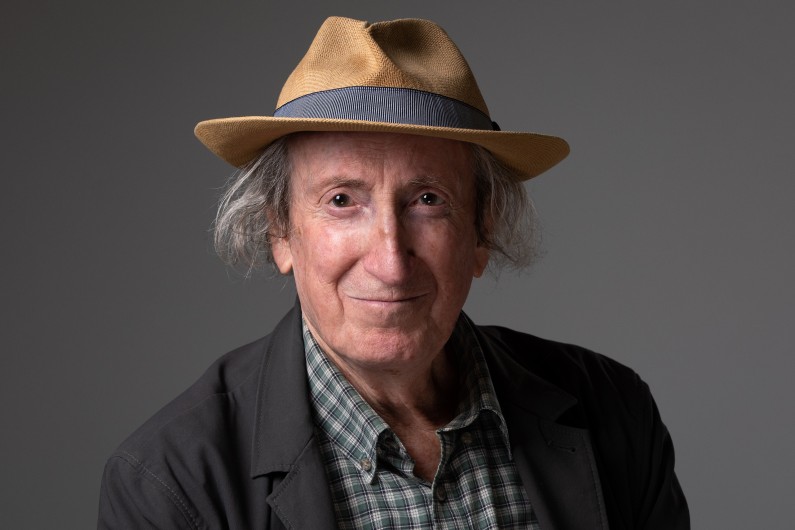Interview with Patrick Huerre, hydrodynamic instabilities specialist

What is the field of hydrodynamic instabilities?
Fluid mechanics deals with flows. Some of them are rather calm or regular, "laminar" as the physicists say. Think for example of honey flowing from a spoon. Others are turbulent, disordered, random, like a mountain stream. The same flow can be laminar under certain conditions and turbulent under others, when the speed or flow rate increases for example. How does this transition take place? Can we predict the threshold where it occurs? These are very important questions in fluid mechanics.
To answer them, we look at how small flow perturbations evolve. Do these perturbations increase or decrease? A simple analogy is that of a rigid pendulum - a wooden rod - held at one end. If the pendulum is held vertically by the base, with the other end pointing upwards, a flick of the wrist - or perturbation - applied at the top causes the pendulum to lose its equilibrium position for good: the perturbations increase. On the contrary, if the pendulum is held by the top, with the other end pointing downwards, a flick applied to the bottom causes it to swing, but the perturbations decrease and the pendulum returns to its stable equilibrium position. The field of hydrodynamic instabilities studies similar phenomena in fluids. Turbulence and the laminar-turbulent transition are present in many applications: in aeronautics, climatology, biology, etc.
Nevertheless, you describe yourself primarily as a theoretician.
Yes, I must say that my career has not been guided by applications, even though I consider it quite legitimate and necessary for colleagues to emphasise this aspect. The driving force behind my research is to take a phenomenon observed during experiments, carried out in the laboratory or by digital simulation, and to try to deconstruct it theoretically. To be able to say 'this works, this is the essence of the phenomenon' is for me the pleasure of the researcher. I therefore develop mathematical models with my colleagues, in the past with pen and paper and now with a computer.
To give an example of work carried out with my team, we were among the first to distinguish between so-called 'oscillating' flows and so-called 'amplifying' flows. Imagine a flow such as a river flowing around a bridge pier. If we increase the speed of the current upstream of the bridge, we see that beyond a certain threshold, a path of vortices called "Von Karman vortex street" is formed downstream of the pier. This instability remains even if the current is not disturbed: it is called an oscillating flow.
Below this velocity threshold, the presence of a current perturbation can still cause a vortex street downstream of the pier, but this disappears if the perturbation stops. This is known as an amplifying flow. These behaviours called for the development of specific theoretical tools and we used the concepts of "convectively unstable" and "absolutely unstable" flows, which proved to be successful in distinguishing these phenomena. This was the starting point for a series of works, and a research programme carried out with various flows. Today, I am still working in this direction, particularly in the case of smoke plumes.
The European mechanical society, Euromech, also awarded you this prize for your "major contributions to the European mechanical community". At l’X, you co-founded the hydrodynamics laboratory (*LadHyX) when you joined the school in 1990. Is this community important to you?
Research is indeed a collective endeavour, but also an international one. International is a word that characterises my career. On the one hand, because I have spent a third of my time abroad, between a doctorate at Stanford University, a post-doctorate in England, and then a professorship in the Aeronautical Engineering Department at University of Southern California. At the European level, I was for 10 years president of Euromech where I encouraged regular conferences to place the community in an international context, going beyond national frameworks.
As for the founding of LadHyX with Jean-Marc Chomaz, it was an exciting adventure, even if it was not easy to familiarise oneself with the functioning of French higher education coming from the United States! We have of course developed collaborations abroad which are still ongoing. Finally, I also taught mechanics to students in the Ingénieur Polytechnicien program for many years. I am also very happy with the internationalisation of the School. I now hear a lot of talk in English when I have lunch at the Magnan!
*LadHyX: a joint research unit CNRS, École Polytechnique - Institut Polytechnique de Paris
 Support l'X
Support l'X